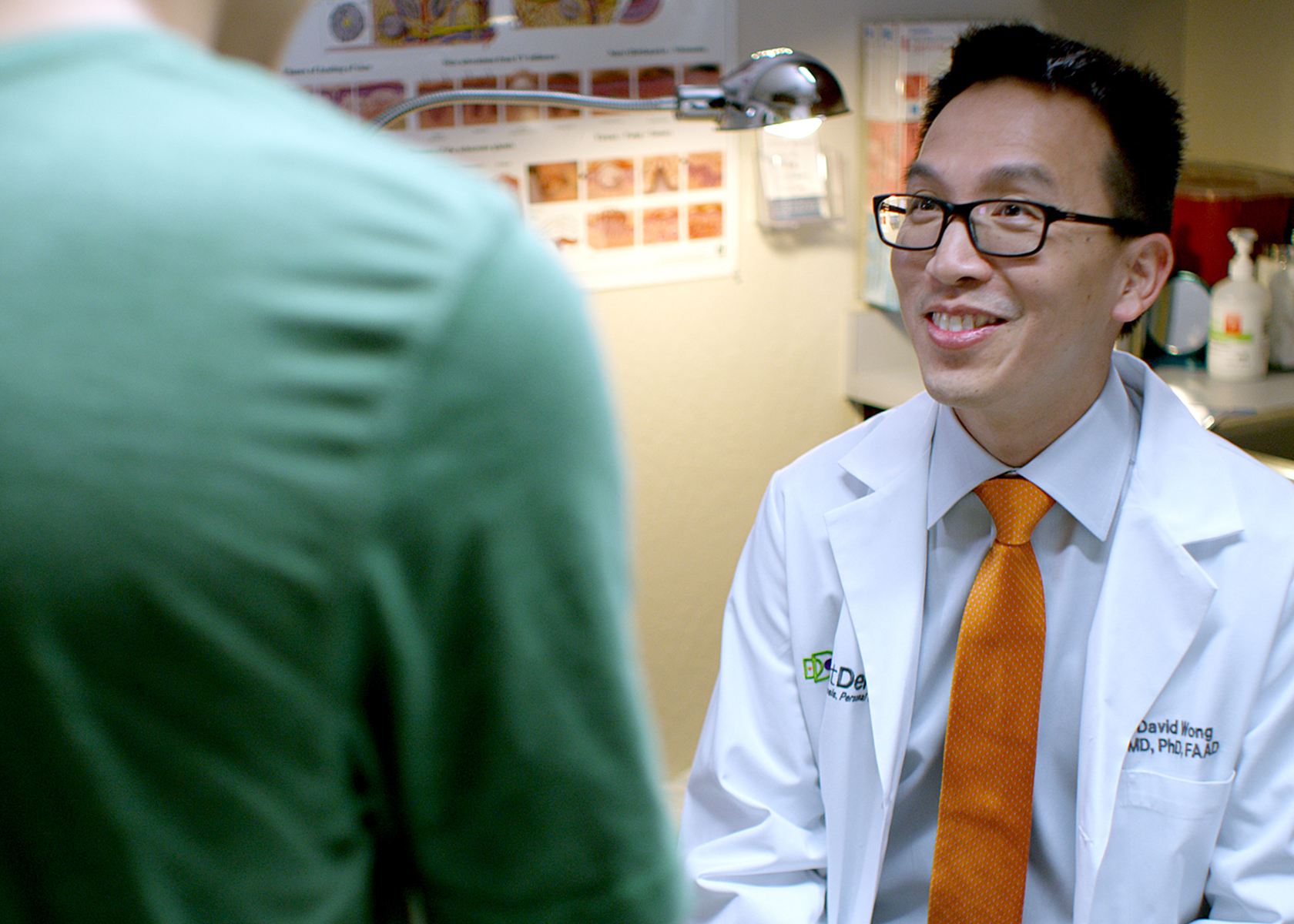Canadians have longer waits to see a medical specialist than most other industrialized nations.That’s according to a report by the Canadian Institute for Health. A virtual dermatologist and a smart phone just might be one way to bridge the gap.
Health Plan of San Joaquin is a managed care plan that serves more than 380,000 people living in California’s Central Valley. In 2012, the plan began offering virtual dermatology referrals through a company called Direct Dermatology. In the beginning, GPs and internists referred patients to a virtual dermatologist complete with background information about the patient plus photos of the rash or skin lesion – both uploaded to a secure web site. The virtual dermatologist would give an opinion about the rash to the referring doctor within a few days
More recently, patients have been referred to a bricks and mortar building where they are interviewed and photographed first by a nurse. If necessary, a skin biopsy can be done there too.
So far, the program has been quite successful. Researchers from Rand Health the largest independent health policy research program in the U.S. crunched the numbers. Of close to 400,000 patients in the plan, 8614 were referred a dermatologist. Overall, half the patients saw a dermatologist in person, and half had a virtual appointment. After the U.S. Affordable Care Act came into effect in 2014, more than 108,000 new patients entered the plan. Of the newbies referred to a dermatologist, one quarter saw one in person and three quarters had a virtual appointment.
That means access to virtual dermatologists enabled the plan to keep with a huge increase in the demand for dermatology referrals. It did so despite the region having far fewer dermatologists than the national average.
Like other specialties in medicine, virtual dermatology has attracted its share of critics. They maintain that no one – not even a dermatologist who often makes spot diagnoses based on the typical appearance of a skin lesion – can diagnose a patient without seeing them in person. Texas and other states in the U.S. have tried to put the breaks on virtual appointments.
I like the way Health Plan of San Joaquin adapted its virtual dermatology program to anticipate that objection. The bricks and mortar clinic I told you about also serves as the place where the virtual dermatologist can refer patients with more complex skin and other conditions for a more complete assessment by a dermatologist in person. The use of the physical clinic is reassuring. In the study, those who received a virtual appointment only were younger and more likely to have minor skin problems like acne and warts; those seeing a dermatologist in person were older, had more serious skin problems like cancer, and tended to have other serious medical problems.
I imagine that some of these critics would be dermatologists who might feel threatened by this. I think dermatologists enjoy being in scarce supply in Canada. They get to schedule delayed appointment – by which time the skin rash has either gone away, or is so easy to diagnose that even a medical student can offer a correct opinion. If dermatologists lose significant business to virtual colleagues, then more and more of them will go the virtual route themselves.
Smart phones work surprisingly well with virtual appointments. A 2015 study by researchers at the University of Pennsylvania found that a smart phone app can help doctors prioritise referrals to a virtual dermatologist. In another recent study, researchers in Sweden and South Africa recruited subjects to rate the quality of photos taken by various smart phones – and compared them to photos taken by a digital camera. The image quality generated by the smartphones was just as good. Add-on devices are being developed that can enhance today’s smart phones to the point where they might be able to help detect cancer.
It’s tempting to say that what happens in health care in the U.S. is not applicable to Canada. In this case, I think that’s incorrect. Virtual access to a dermatologist under the Health Plan of San Joaquin is not a marketing gimmick to generate income. The Health Plan of San Joaquin is not for profit. Like Canada, it provides publicly funded health care – in this case – under contract to California’s Department of Health Care Services.
What is different to me is that the U.S. is more willing to try new ideas. In Canada, we let fears of breaching patient privacy act as a break on the development of virtual medicine. That’s changing, but not as fast as I’d like and, as we need to keep up with an ever-increasing demand for services.

 At DirectDerm, we believe that the quality of a dermatology service is rooted in the training, experience and skills of the dermatologist – whether in person or in a virtual setting.
At DirectDerm, we believe that the quality of a dermatology service is rooted in the training, experience and skills of the dermatologist – whether in person or in a virtual setting.
 The number of patients who received care from a dermatologist nearly doubled when DirectDerm’s “virtual dermatology” services were offered. And among those newly enrolled in the Health Plan under the Affordable Care Act, 75 percent of those who received dermatology care, received it virtually – through DirectDerm.
The number of patients who received care from a dermatologist nearly doubled when DirectDerm’s “virtual dermatology” services were offered. And among those newly enrolled in the Health Plan under the Affordable Care Act, 75 percent of those who received dermatology care, received it virtually – through DirectDerm.
